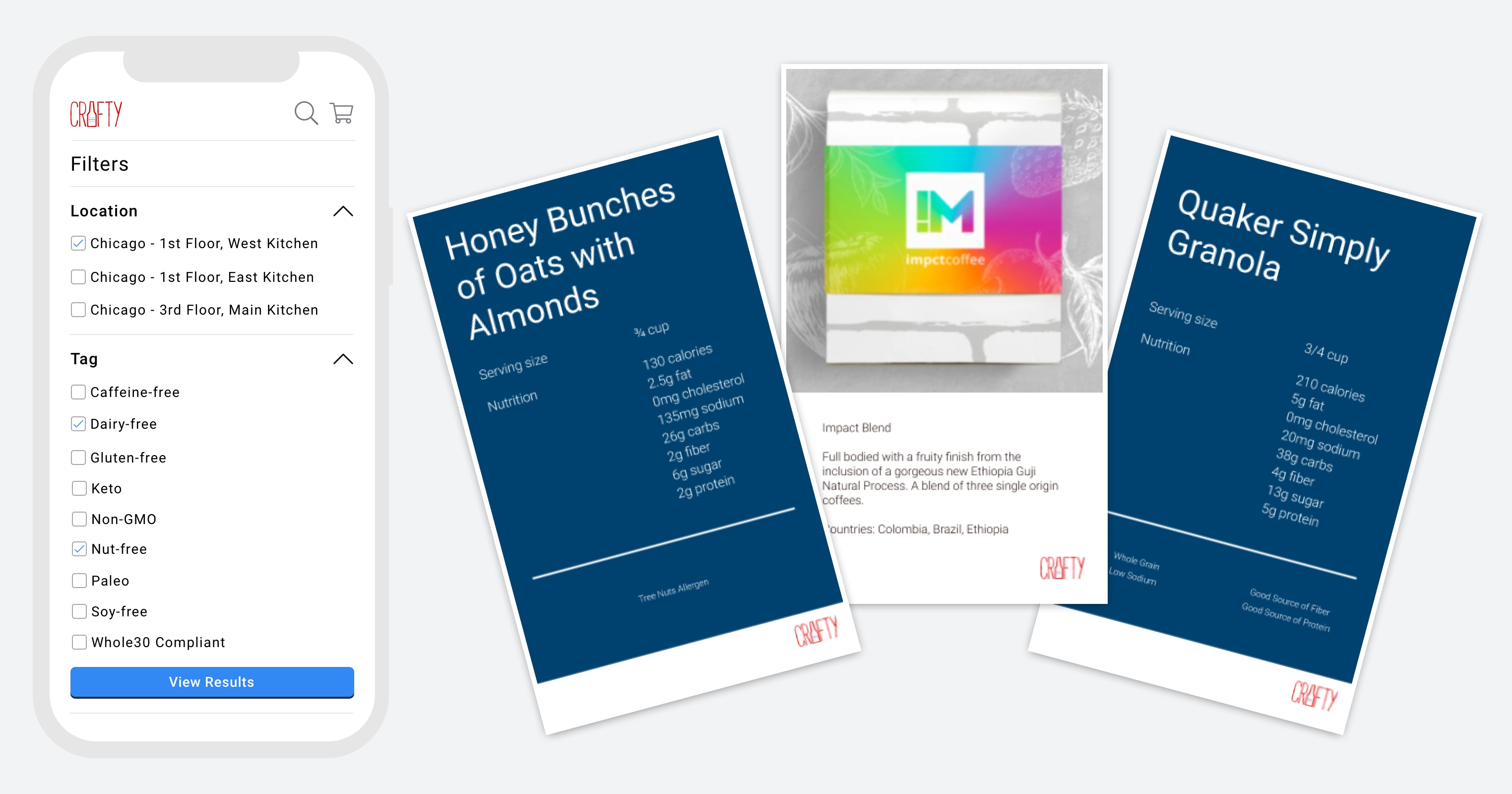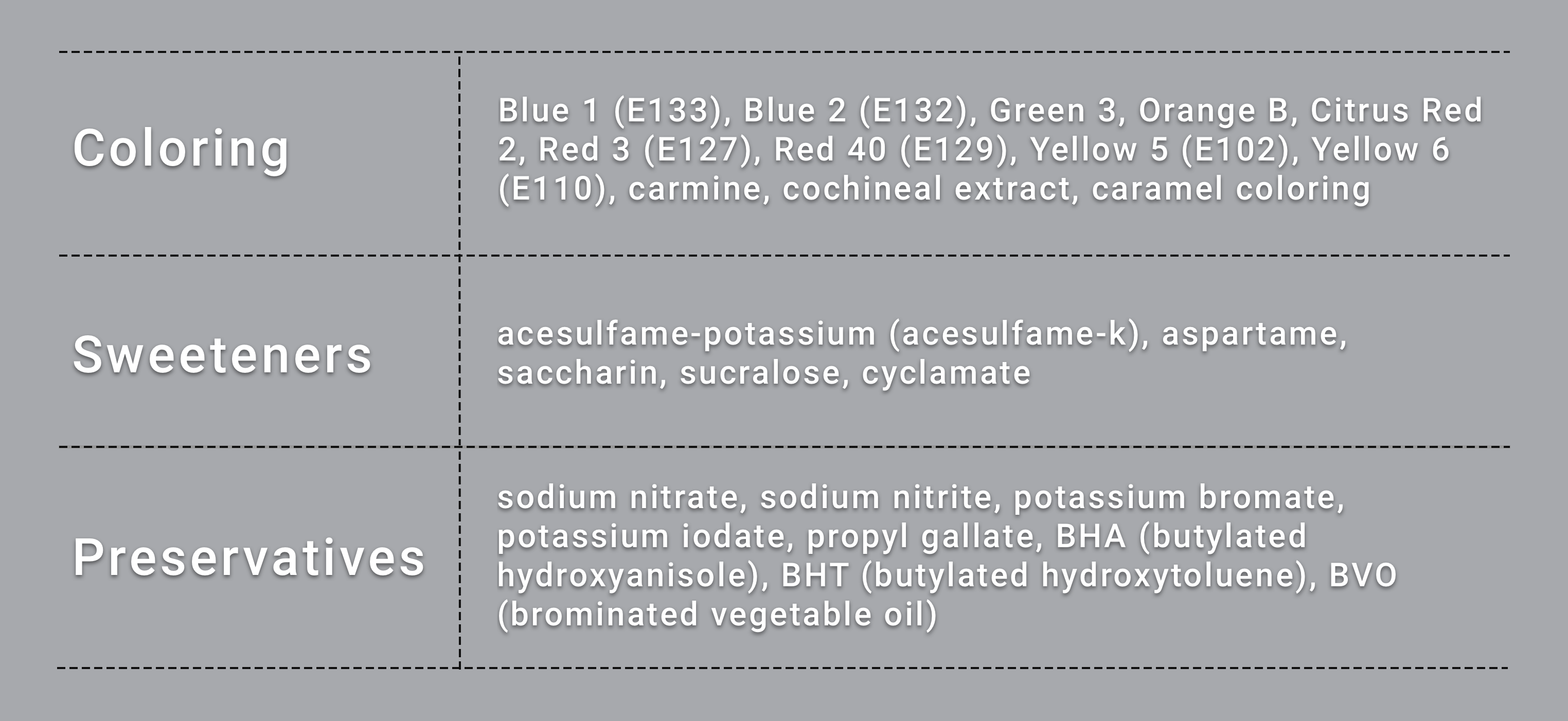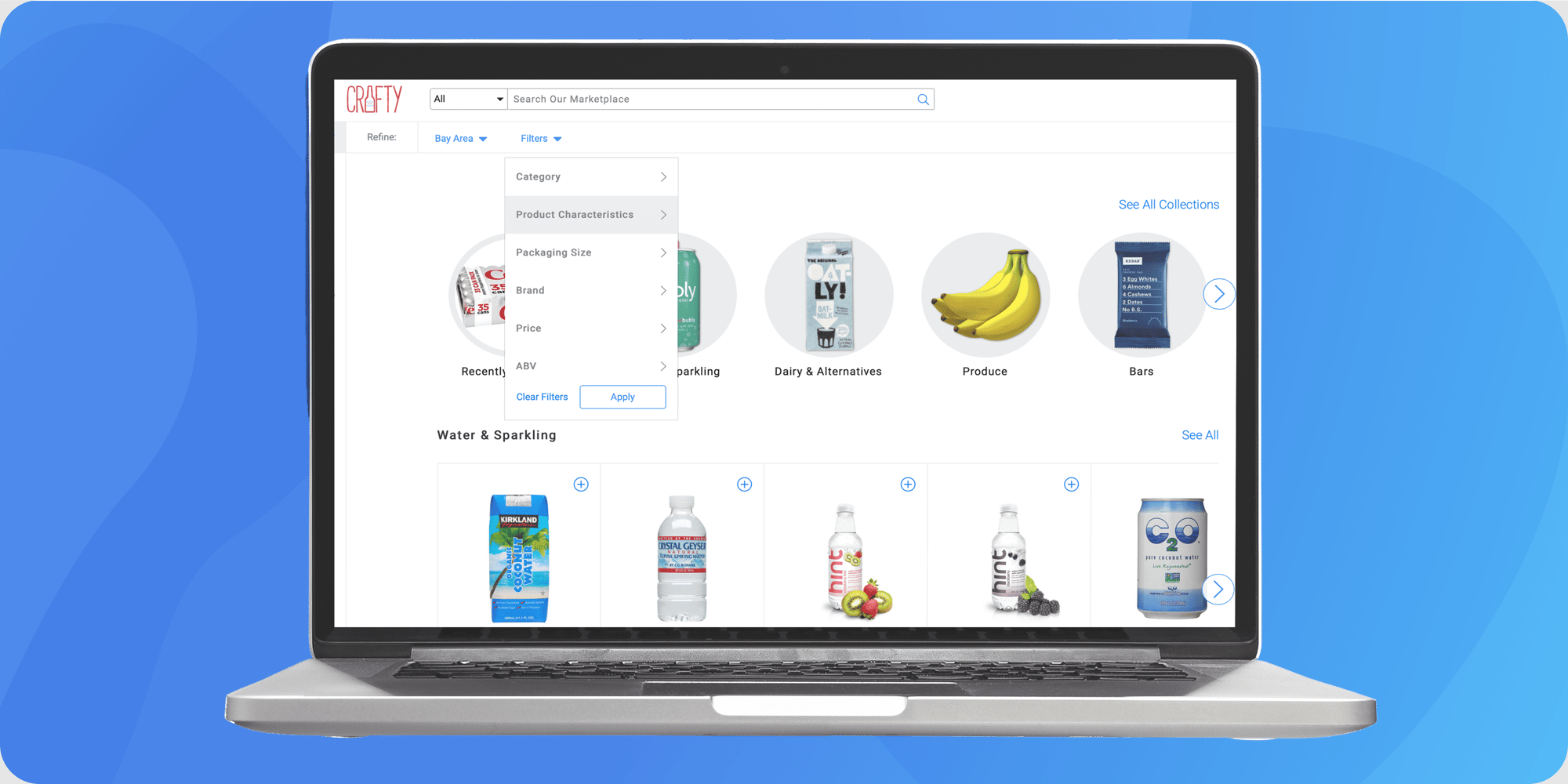How to use WELL Standards in your food service program

WELL, WELL, WELL… what have we here?
You think we weren't going to start out with a pun? We wouldn't be who we are in our bones if we let a pun slip by!
Now that we got that out of our system, let's talk about WELL Standards and Certifications for buildings.
What is the WELL Building Standard?
In the words of the International WELL Building Institute, "the WELL Building Standard is the premier standard for buildings, interior spaces, and communities seeking to implement, validate, and measure features that support and advance human health and wellness."
Basically, it's a collection of standards that a building follows in order to be WELL! It's how many buildings and companies invest in the overall health of the people who occupy space within the building by making sure the very space the building occupies is healthy.
WELL standards are based on a number of concepts that affect our everyday health:
- Air
- Water
- Nourishment
- Light
- Movement
- Thermal Control
- Sound
- Materials
- Mind
- Community
- Innovation
How does Crafty Incorporate WELL Standards into an Office Kitchen and Pantry Program?
Our mission is to help companies craft a better workplace, so naturally, we love the mission of the WELL Standards! Since we're in the food and beverage game, the concept we really shine on is Nourishment. The WELL Institute recognizes food and beverage and a critical venue for health improvement within buildings, and we couldn’t agree more :)
Their nourishment standards are broken into 13 features. The final 2 features of the Nourishment concept, don't apply to us as they have to do with food production (Crafty does not make any of our food) and food access (i.e. making sure the building is near a supermarket). So, let’s focus on the first 11 features!
We'll go over each feature that applies to Crafty and what the requirements are. All the information here is also available on the WELL Institute website, which you can check out here.
1. Fruit and Vegetables
Hopefully we all know by now that fruits and veggies are an important part of a healthy diet. The World Health Organization recommends we have at least 5 serving a day. Here are the standards and how we comply:
Ensure Fruit and Vegetable Availability
If foods are sold or provided on a daily basis on the premises by (or under contract with) the project owner, then the selection includes at least one of the following:
- At least 2 varieties of fruits (containing not added sugar) and at least 2 varieties of non-friend vegetables.
- At least 50% of available options are fruits (containing no added sugar) and/or non-fried vegetables.
Promote Fruit and Vegetable Visibility
Cafeterias operated by the project over, if present, include the following design interventions:
- Salad bar or similar salad providing section. position in a visible and accessible location.
- Fruits and Vegetables are visually apparent, either through display or through color photographs on the menu.
- Vegetable dishes are placed at the beginning of the food service line.
- Fruits or fruit dishes are places in a bowl or in a stand at the checkout location.
2. Nutritional Transparency
To meet this WELL Standard, you need to provide nutritional info, full disclosure of ingredients and possible food allergens, and refined ingredient labeling.
Provide Nutritional Information
The following nutritional information is clearly displayed (per meal or item) at point-of-decision on packaging, menus or signage for all packaged foods and beverages sold or provided on a daily basis within the project boundary:
- Total calories.
- Macronutrient content (total protein, total fat and total carbohydrate) in weight and/or as a percent of the estimated daily requirements (daily values).
- Total sugar content.
Implement Ingredient Labeling
The following requirements are met for all non-packaged foods and beverages sold or provided on a daily basis within the project boundary and foods prepared on-site (see Appendix N2 for exemptions):
- A list of primary ingredients is clearly displayed (per meal or item) at point-of-decision on packaging, menus or signage. If information is displayed on a digital resource, signage is present at point-of-decision to direct individuals to the digital resource.
- Common food allergens are clearly labeled at point-of-decision on packaging, menus or signage.
Implement Refined Ingredient Labeling
All foods and beverages sold or provided on a daily basis within the project boundary that meet the following conditions are prominently labeled at point-of-decision to indicate high sugar content or partially hydrogenated oils:
- Beverages that contain more than 25 g of sugar per container.
- Non-beverage food items (except whole fruits) that contain more than 25 g of sugar per serving.
- Foods and beverages that contain partially hydrogenated oils.
Our team plays an active role in building out signage to provides nutritional information of the products available in your space. We also like to leverage our technology, but that’s just for bonus points!

3. Refined Ingredients
This is how WELL helps people avoid highly processed foods and ingredients!
Limit Total Sugars
All foods and beverages sold or provided on a daily basis within the project boundary meet the following requirements:
- Beverages do not contain more than 25 g of sugar per container. Bulk containers of 1 L [1 qt] or larger do not contain more than 25 g of sugar per serving.
- At least 25% of beverages contain no sugar per container or serving, or drinking water is available at no cost.
- No non-beverage food item (except whole fruit) contains more than 25 g of sugar per serving.
Promote Whole Grains
All foods and beverages sold or provided on a daily basis within the project boundary meet the following requirements:
- In at least 50% of grain-based foods, a whole grain is the first ingredient.
- If both whole grain and refined grain options are available, whole grain options do not cost more than their refined grain counterparts (i.e., brown rice does not cost more than white rice).
Manage Oils
The following requirements are met:
- All foods and beverages sold or provided on a daily basis within the project boundary do not contain partially hydrogenated oils.
- Frying oils used on-site are discarded before the level of total polar materials (TPM) becomes greater than 24% during operation.
4. Food Advertising
This WELL feature requires healthy food advertising and nutritional messaging and strategic menu design to guide healthy food choices.
Promote Healthy Nutritional Messaging
Advertisements for foods and beverages within the project boundary meet the following requirements:
- Sugar-sweetened beverages are not marketed or promoted.
- Deep-fried food options are not marketed or promoted.
Nutritional Messaging
Designated eating areas or common areas contain at least three different instances of messaging per project that communicate at least one of the following:
- Encouragement of the consumption of whole, natural foods.
- Encouragement of the consumption of drinking water.
Implement Healthy Menu Design
The following requirements are met if foods are sold or provided on a daily basis within the project boundary:
- A description of the nutritional criteria used to identify healthy menu items is submitted through WELL Online. Nutritional criteria should be based on dietary, scientific or medical evidence or guidelines.
- On menus and menu boards, healthy menu items are presented according to at least three of the following promotion strategies:
- Included as the default options throughout the menu (e.g., a salad is the default side instead of fries or chips).
- Listed using appealing descriptions.
- Visually highlighted through icons, different colors or bolding.
- Listed first in each menu section.
- Listed in prominent areas of the menu (e.g., the top, bottom, corners).
5. Artificial Ingredients
This WELL feature requires projects to label and phase out or restrict artificial ingredients.
Restrict Artificial Ingredients
- Projects phase out (over a maximum of three years) the use, sale and provision of foods and beverages containing artificial ingredients listed in the table below. Additionally, all foods and beverages sold or provided within the project boundary are clearly labeled on packaging, nearby menus or signage to indicate whether they contain artificial ingredients listed in the table below.
- All foods and beverages sold or provided on a daily basis within the project boundary do not contain artificial ingredients listed in the table below:

6. Portion Sizes
This WELL feature requires reduced-size food options when food is sold or provided and limits dishware sizes when food is self-serve.
Promote Healthy Portions
In employee dining areas, where food is sold or provided on a daily basis within the project boundary, the following requirements are met (as applicable):
- Where food is sold or provided for employees or visitors, at least one of the following is available for at least half of all offerings:Individual items offered in reduced-size or half-size portions (e.g., half-sandwich) and at a lower cost compared to the larger, regular version. A version of the main course offered in a reduced-size or half-size portion and at a lower cost compared to the larger, regular version.
- Where food sold or provided for employees or visitors is self-serve and requires the use of a serving plate, bowl or cup, each of the following is met (as applicable): Circular plates: the diameter of a plate is no larger than 25 cm [10 in]. Non-circular plates: the total surface area of a plate does not exceed 507 cm² [79 in²]. Bowls (except at salad stations) are no larger than 473 mL [16 oz]. Cups (except for water) are no larger than 473 mL [16 oz].
7. Nutritional Education
The goal with the Nutritional Education standards is to improve dietary habits and eating behaviors and increase nutritional knowledge.
Provide Nutrition Education
At least one of the following is offered at no cost:
- Cooking demonstrations on a quarterly basis, at minimum.
- Nutrition or dietary education workshops on a quarterly basis, at minimum.
- Individual nutrition consultations by registered dietitians or certified nutrition professionals on a quarterly basis, at minimum.
- Educational materials including cookbooks, magazines or other literature that promotes healthy eating and nutrition, with at least three different resources available for every 100 regular building occupants or students.
8. Mindful Eating
This WELL feature requires designated eating spaces that contain tables and chairs and the provision of daily meal breaks.
Include Designated Eating Spaces
The project has a designated eating space for regular building occupants that meets the following requirements:
- Contains tables and chairs to accommodate at least 25% of regular building occupants at peak occupancy. If multiple designated eating spaces are present, the combined seating space must accommodate at least 25% of regular building occupants at peak occupancy.
- Provides protection from environmental elements (e.g., direct sunlight, rain, wind) or is in a climate-controlled space.
Provide Daily Meal Breaks
The following requirement is met:
- Employees and students (as applicable) have a daily meal or lunch period of at least 30 minutes and the opportunity to eat away from their workstation.
9. Special Diets
This WELL feature requires the provision of meal alternatives and enhanced nutritional transparency when meals or catering are provided.
Manage Allergies and Alternatives
Meals, including catered meals, include at least one main course option for each of the following criteria upon request:
- Peanut-free.
- Gluten-free.
- Lactose-free.
- Egg-free.
- Containing no animal, seafood or dairy products.
- Containing no animal or seafood products, except for eggs and dairy.
Implement Enhanced Ingredient Labeling
All foods and beverages provided by catering within the project boundary meet the following requirements:
- A list of primary ingredients is clearly displayed (per meal or item) at point-of-decision on packaging, menus or signage.
- Common food allergens are clearly labeled at point-of-decision on packaging, menus or signage.
10. Food Preparation
This WELL feature requires a food preparation area, storage space and other amenities to support the reassembly or reheating of meals on-site.
Provide Meal Support
In employee dining areas, at least one dining space contains the following supportive amenities that meet employee demand:
- Cold storage.
- Countertop surface.
- Sink and amenities for dish and hand washing.
- Device for reheating food (e.g., microwave, toaster oven).
- Dedicated cabinets or storage units available for employee use.
- Reusable eating utensils, including spoons, forks, knives and microwave-safe plates and cups.
11. Responsible Food Sourcing
This WELL feature requires sourcing certified organic produce and Certified Humane meat, egg or dairy products.
Implement Responsible Sourcing
Sustainable sourcing:
The total product line (including products that are purchased, used and sold) meets the following criteria:
- At least 50% of the total produce line (fruits and vegetables) is certified organic.
- At least 25% of the total animal product line (meat, seafood, egg and dairy products) is certified organic, Certified Humane®, or certified by a GSSI-recognized Seafood Certification Scheme.
Sustainable labeling:
Sustainable and humane agriculture is promoted through the following (as applicable):
- Certified organic and Certified Humane® products are labeled at point-of-decision.
- Local farms or sources are advertised at point-of-decision for locally sourced foods.
And that's the loooooong and short of it!
Still have questions about how we can work within the WELL Standard? Great! Pop down below to get in touch with a member of the Crafty crew.
What to read next!
OFFICE SNACKS
How To Stock An Office Kitchen With Healthy Snacks Your Team Will Love
Master the art of setting up your kitchen and stocking it with a wide variety of snacks and drinks.

